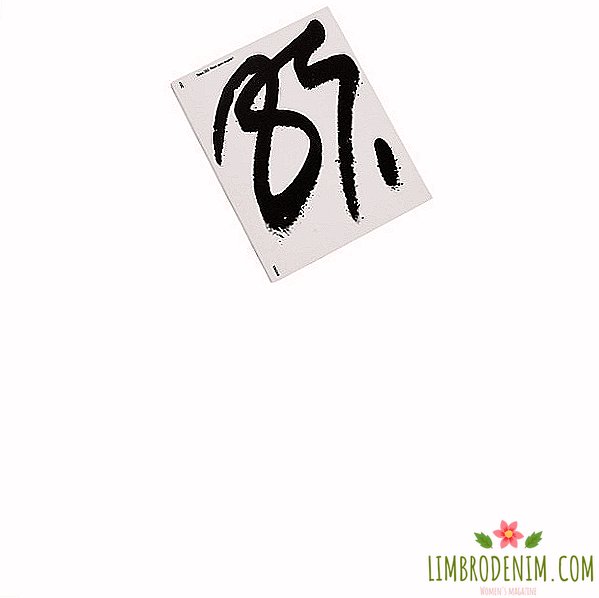Bullet journal: The perfect way to keep a diary

alexander savina
It seems everyone around are diaries. Against the backdrop of the rush of organization, the new system is gaining popularity, how to do it as effectively as possible. It is called not too sonorous in Russian by the term "bullet-journal" - from the English "bullet", meaning not only "bullet", but also "point". It is designed to streamline goals, plans and daily tasks, as well as conveniently and quickly record important information. New York designer Ryder Carroll came up with a bulletin magazine: since he was still in school, he had a hard time concentrating on one topic and he wanted to find a way to quickly fix the thoughts that came to his mind to return to them at any moment.
So there was a whole system that combines a diary, a list of goals and a notebook for thoughts and ideas. In 2013, Carroll released a video where he talked about a new way, and in 2015, an improved version of the video, which scored almost four million views; from it you can learn the basic principles on which this diary is based. The Bullet-Journal is praised by BuzzFeed and Quartz, and fans of the method can be found on any social network - the Ryder Carroll project on Facebook, for example, tens of thousands of subscribers. We tell why you need it too and how to begin your highly effective planning.
What is the bullet journal?
The Bullet Journal is not just a diary, but a mixture of a glider and a personal diary: it’s convenient to record all sorts of things (from random thoughts that come to your mind to urgent work tasks and plans for the next decade) - and quickly find what you need with the help of special characters. All the necessary information is stored in one place, and instead of being torn between notes on the phone, notebooks and applications like Evernote and Trello, just look in the notebook. In addition, the Bullet-Journal is a clear system: with its help, it is convenient to transfer tasks for which you did not have enough time, from day to day, from week to week and not to miss anything important.
There is no universal recipe to become more productive (there are several types of productivity, and each of us will have his own way), but the bullet journal is a good tool, especially for those who need to plan their time and prioritize - that is, put everything on the shelves. Unlike traditional dated diaries, the Bullet Journal can be customized, leaving only those tools and sections that you need, and adding something of your own.
How to keep such a diary?
The big plus of the bullet journal is that you can start keeping such a diary from any date - so it’s not necessary to wait for the next January. First, you need to get a notebook - not too heavy, but not too small, so that it is comfortable to carry with you and it contains all the information you need. The most popular among the adherents of the system - Leuchtturm1917 and Moleskine, but any notebook or undated diary will do - in a cell, in a ruler or unlinear (be prepared for the fact that in a year you will have to use several pieces). If the pages in the notebook are not numbered, you will have to do it yourself.
To start, take the page under the table of contents (Index) - you will fill it as you go. Here you have to record the names of sections and pages that they occupy. The next step is the annual turn (future log). Under it you need to take a few pages; most often they are divided into three parts, each of which corresponds to one month. Here you can record big goals for the year and important dates (for example, birthdays and anniversaries). Not everyone uses the annual spread, but it can be useful if you want to evaluate the plans as a whole.
The next net reversal will be your monthly reversal (monthly log). On the left page, Ryder Carroll advises writing out all the days of the month, and signing the days of the week next to them. Opposite numbers you can write out events and events, the dates of which will not change exactly - for example, the days of business trips. On the right page of the page, write out the big questions and tasks that are not tied to a specific date that you need to solve this month - at the end of the month it is convenient to see whether you have made the schedule or not.
Finally, the main part of any diary - daily entries. The name "bullet journal" itself implies that you write everything point by point. Each item in the to-do list is marked with a special icon: daily tasks ("parse mail") - a point, events, meetings and events ("lunch with a colleague") - a circle, and notes and thoughts (for example, work ideas) - a dash. Especially important or urgent tasks can be marked with an asterisk or an exclamation point. If you completed the task, put a cross instead of a dot. At the end of the week, look at the tasks that were left unfinished and decide if they are relevant - if not, cross them off, and if they are still important, mark them with an arrow or ">" and move them to the next week or month.
In addition to the basic symbols, you can use any others that you need (for example, $ to denote purchases and expenses) - the main thing is that there should not be too many of them and you will not get confused. Icons should be written on a separate sheet - they are especially useful in the first time, when you just get used to the system.
In addition to the main tasks in the diary, you can make lists - for example, books that you plan to read, or frequent purchases. Do not forget to mark in the table of contents how many records are occupied for a particular month and on which page lists are located.
How else can you make your life easier?
As planned by Ryder Carroll, the bullet journal is not only a to-do list, but also a diary: you can use it to evaluate what you managed to do in a month or a year and recall what happened during that time. It's no wonder that many add photos, drawings, and pay a lot of attention to design — if that inspires you, Pinterest, Instagram, and themed communities are full of ideas. Such a serious approach, on the contrary, is scary for many, and if you are not ready to spend time on lettering and sketching in the margins, it's okay: the diary should be primarily useful and practical, so you can restrict yourself to a minimalist approach. You can take note of individual techniques - for example, use pens of different colors to mark particularly important tasks or to separate work from personal business.
Bullet Journaling is a flexible system that can and should be adapted for you. It is not necessary to use all the tools: for example, if you do not have the habit of building a plan for a month immediately, you can drop the to-do list for a month. If you do not like to write out the dates of the month in a column, you can make a spread with a regular calendar. You can add tasks for each week, then distribute them by day, you can plan the day in more detail and set yourself tasks for morning, afternoon and evening - it all depends on your needs and desires.
In such a diary, it is also convenient to compile checklists to keep track of your habits - for example, to note whether you have slept enough, went to the gym, what your mood was and if you have done housework. Some ideas can be found here. The bullet journal will not solve all your problems - but it will certainly help to become more collected and more productive.




